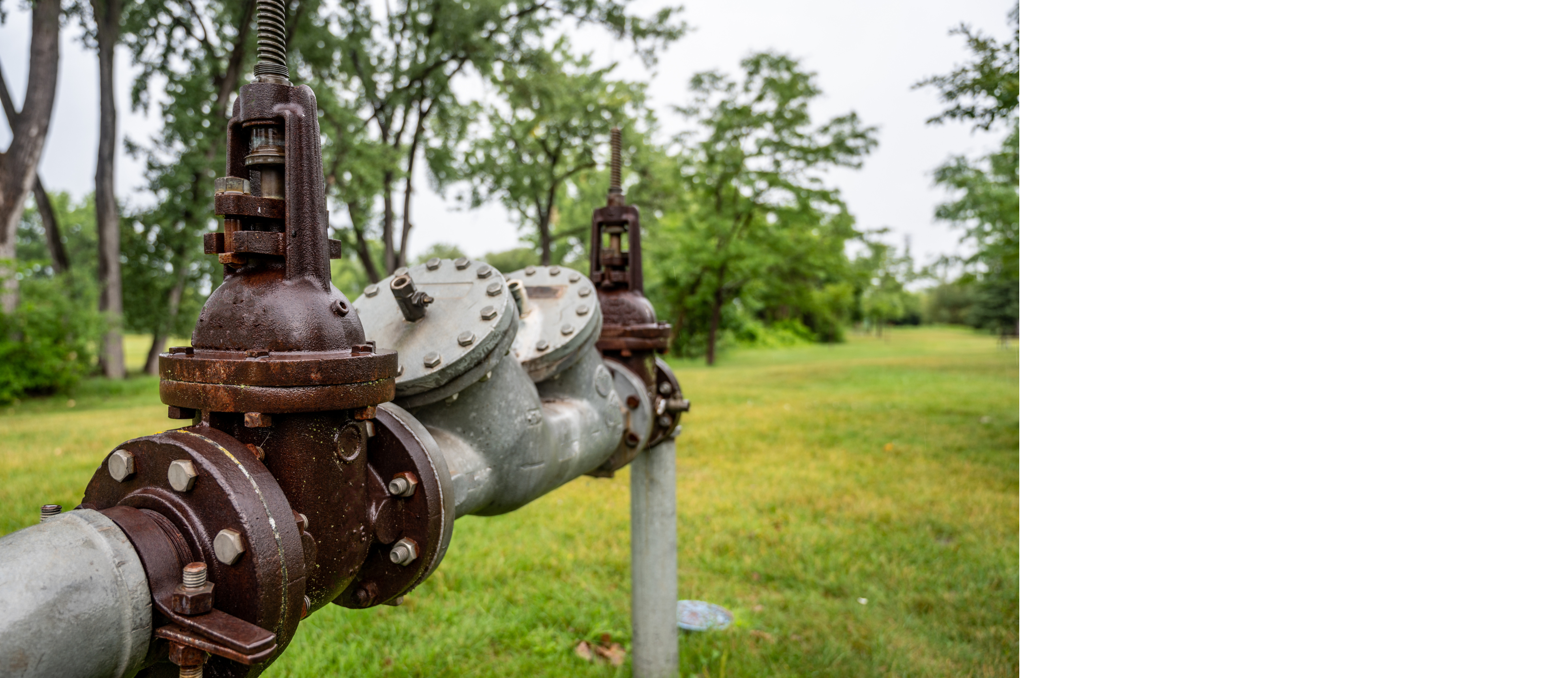419-784-0828

Backflow Preventer Testing Overview
Your daily water supply, used for drinking and handwashing, typically follows a one-way path from source to tap. However, the occasional reversal, known as “backflow,” poses a significant risk of water contamination. To mitigate this risk, regular backflow preventer testing is mandated by law on an annual basis, requiring the expertise of a certified plumbing company, like Fitzenrider.
Backflow Preventer Testing is essential to businesses because it ensures the continued integrity of water quality and protects against potential contamination risks, thus protecting the health and well-being of both employees and customers. Fitzenrider stands ready to support businesses in maintaining regulatory compliance and water safety, offering specialized services. Our expertise ensures businesses can trust in the reliability and efficiency of their backflow prevention systems. This essential testing not only ensures the proper functioning of a backflow prevention device but also provides peace of mind for the safety of the water for your customers, employees, and building functionality.
Explore Fitzenrider’s extensive plumbing services to discover how we can meet your needs.
What is Backflow Preventer Testing?
To ensure protection against backflow incidents, installing a reliable safety device is important. A backflow prevention device acts as a barrier, preventing the entry of contaminated water into the clean water supply during unforeseen or drastic changes in water pressure. It is crucial to ensure the proper installation and regular testing of this device to guarantee the ongoing purity of the clean water line.
Adhering to Ohio municipal codes, annual testing of backflow prevention devices is mandatory. Failure to conduct timely testing may result in fines, and in more severe cases, the water supply to your property or business could be at risk. To avoid these outcomes, we strongly recommend proactively scheduling regular testing well in advance. It’s a proactive measure that not only ensures compliance but also upholds the integrity of your water supply.
Why Is Backflow Preventer Testing Important?
The backflow preventer is a crucial component of your plumbing system, ensuring that drinking water remains uncontaminated by allowing water to flow in only one direction. Although this is the most important matter, testing is crucial for more than just this reason. Backflow preventer testing is crucial for:
- Water Safety: The primary purpose of backflow preventers is to ensure that contaminated water does not flow back into the clean water supply. Testing verifies that these devices are functioning correctly, reducing the risk of waterborne diseases and contaminants.
- Compliance with Regulations: In many places, there are regulations and codes that mandate the installation and regular testing of backflow preventers. Businesses and residences often need to adhere to these requirements to stay compliant with local water safety standards.
- Preventing Health Hazards: Backflow, whether due to backpressure or damage, can introduce pollutants, chemicals, or pathogens into the drinking water supply. Regular testing helps identify and address potential issues before they pose a health risk to consumers.
- Maintaining System Integrity: Over a span of 5 to 10 years, backflow preventers will experience wear and tear. Regular testing allows for the detection of any malfunctions, deterioration, or damage, ensuring that the devices continue to operate effectively.
- Public Confidence: Regular testing and adherence to water safety standards contribute to public confidence in the quality of the water supply. Knowing that preventive measures are in place and regularly checked assures consumers of the safety of their tap water.
What Does a Backflow Test Consist Of?
After scheduling an appointment with a plumbing expert at Fitzenrider, our technician will temporarily shut off the water to your building. Next, the technician will manipulate valves on the backflow device, observing pressure variations and taking measurements simultaneously. Finally, the technician will employ a tester to verify the proper activation of the system. Once we have performed service at your location, our dispatcher will notify you when the next test is due to ensure proper backflow testing is done annually.
What Devices Are Used For Backflow Prevention?
The Backflow Prevention Test serves to identify the presence and cause of backflow. The following are examples of devices used for Backflow Prevention:
- Double-Check Valves: Engineered to safeguard sanitary water from toxic chemicals and contamination, this piece of equipment contains two check valves to stop sudden pressure changes. With the second valve serving as a backup in case the first is stuck open, it ensures normal water pressure until the issue is resolved. Double-check valves are crucial for preventing water contamination in lawn, fire, and boiler systems.
- Reduced Pressure Zones: Aimed at preventing contaminants like pesticides and fertilizers from entering clean water systems, these zones also feature two check valves. Reduced Pressure Zones also include a relief valve designed to release contaminated water when detected. Typically, during repairs, the valve stops draining water once the reduced pressure zone is fixed.
How Does a Backflow Prevention Device Work?
A backflow prevention device operates by ensuring that water flows in one direction, preventing the reversal of water flow and potential contamination of the clean water supply. It typically consists of check valves that only allow water to move in the desired direction, and in more advanced systems, additional components like relief valves may be included to further safeguard against backflow. These devices are crucial in protecting water quality by preventing the backflow of undesirable substances, such as chemicals or contaminants, into the clean water supply. Regular testing and maintenance are essential to ensure the proper functioning of backflow prevention devices.
Conclusion
If you are looking for experts to handle your backflow preventer testing or plumbing needs, now is the time to schedule. Fitzenrider’s specialized services for the installation, maintenance, and inspection of commercial-grade backflow preventers stand as a dependable solution, ensuring your business can maintain regulatory compliance and trust in the reliability of water safety systems. If you own a home or business in Defiance, OH, or surrounding areas looking for professionals to handle your plumbing needs, contact us today!
FAQs
These are the most Frequently Asked Questions we hear regarding Backflow Preventer Testing.
What is Backflow?
Backflow is a critical plumbing issue where impure water reverses its flow and infiltrates clean water lines. This occurrence can manifest at any cross-connection point between pure and contaminated water lines, often triggered by substantial fluctuations in water pressure, such as those resulting from a burst water main. The potential contaminants in the backflow, including human waste, pesticides, and chemicals, raise serious health concerns, reinforcing the importance of addressing and preventing backflow incidents.
What Triggers Backflow Incidents?
Backflow incidents can be triggered by various factors, including excessive water consumption from nearby public sources, such as the use of a fire hydrant during fire incidents. Additionally, damage to water supply lines is another potential cause of backflow, emphasizing the importance of vigilance and proactive measures to prevent the reversal of water flow and ensure the integrity of water systems.
How Can You Tell If a Backflow Device is Broken?
Recognizing signs of a broken backflow device is crucial for maintaining a reliable water supply system. Here are key indicators:
- Discolored Water: If the water appears unusual in color, such as brown or murky, it could signal a problem with the backflow device, indicating potential contamination.
- Water Leaks: Visible leaks from the backflow device or its connections may suggest a malfunction, leading to the loss of water and compromising the system's effectiveness.
- Slow Drainage: Sluggish drainage can be a symptom of a broken backflow device, hindering the smooth flow of water and requiring prompt attention to prevent further issues in the water supply system.





